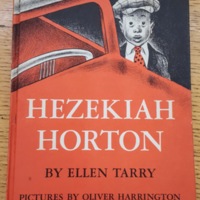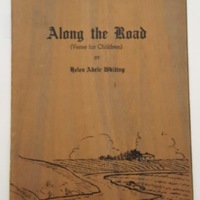Children’s Literature of the Harlem Renaissance by African American Women
About This Exhibit
This exhibition was curated in 2019 by Adetokunbo Awosanmi, a senior undergraduate student at the University of Missouri. Ms. Awosanmi installed the exhibition in the Ellis Library Colonnade, where it was on view during the fall 2019 semester.
Curator's Statement
I had the privilege of working with staff in special collections and a Visual Studies professor to create an exhibit showcasing children’s literature. Most of the books were written or illustrated by African American women. Stories were published within a few decades after the Harlem Renaissance ended. The twenty-one books in the exhibit represent how invaluable the Harlem Renaissance was for African American children’s literature. Finding books, writing labels, and setting up the exhibit were the main goals for this project. I also used via Libri to find and recommend rare books by Ellen Tarry, Jane Dabney Shackleford, and Ann Petry.
World Cat and MERLIN were pivotal in locating most books. Other books were found through bibliographies and other relevant articles. The New Negro, albeit important for the Harlem Renaissance, focused on intellectual movements rather than children’s literature. Although The Brownies’ Book is not in Ellis Library, the University of Nebraska-Lincoln has uploaded issues of the magazine online. After examining the magazine, it is easy to see the positive impact it had not only for African American children, but for children from different ethnic backgrounds. Stories, poems, and illustrations challenged the stereotypical and racist portrayals of African Americans in earlier texts.
Through research, I learned that poetry was a popular medium during the Harlem Renaissance, and it is seen in contemporary African American literature. Poetry and children’s literature complimented each other; as many authors wrote poetry. Some authors wrote multiple books; a few of Arna Bontemps’ books are in the juvenile stacks. A prolific poet and librarian, Bontemps wrote books for young adults and children. Golden Slippers and The fast sooner hound are for younger audiences, while We have tomorrow and Sad-faced boy are for slightly older individuals. Like Golden Slippers, Gladiola garden and The picture-poetry book are collections of poetry. With poetry, aspects of African American life were relayed to a younger, wider audience.
Writing captions was one of the more difficult parts of the project; I needed to balance my interpretations of the text itself and the creators’ motives for their works. While analyzing the text, I examined illustrations and photographs. Some images, albeit harrowing, are displayed in the exhibit. To reflect on the past, a past where racism was not as frowned upon as it is today, acknowledgement is imperative.
I cannot recall reading a lot of African American children’s literature as a child. Most of the books I remember reading throughout grade school had white main characters. Granted, these books were not as problematic as books written in the early 1900s and before. I found it hard to stay invested, as I could not relate to the main character. Humiliation and discouragement are the last things children should feel when reading books about themselves. Unfortunately, with few realistic portrayals of African Americans, negative feelings surface. However, as more children’s literature is written for minorities, more children will learn to love themselves and their skin.


